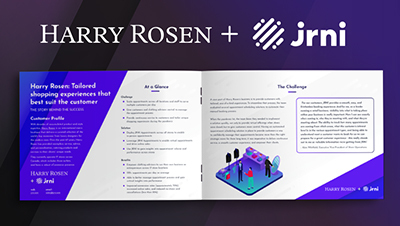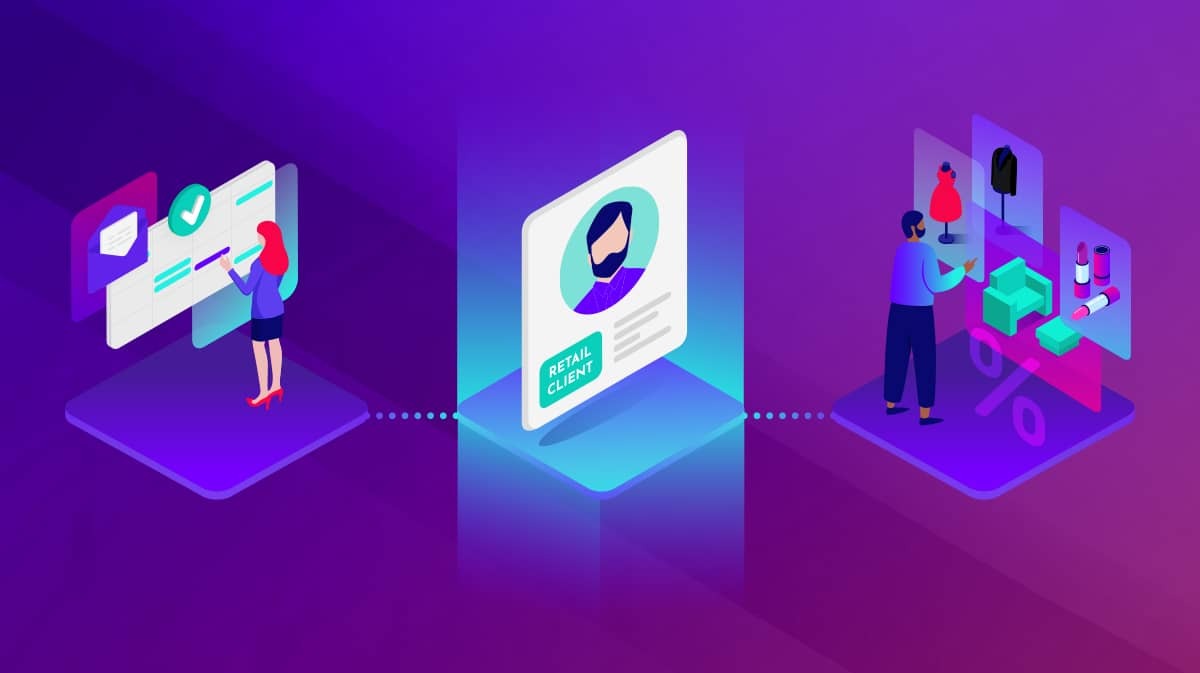In any given year, an estimated 2.14 billion people worldwide shop online. Moreover, one of the four biggest companies in the world (worth over a trillion dollars) is an online retail store - Amazon. This goes to show just how far online shopping and omnichannel retailing have come.
There was a time when retail was all about brick-and-mortar stores. During this period, the kind of customer experience offered within the stores, coupled with affordable prices, kept retailers in business.
Today, however, the customer experience is influenced by a variety of interactions - both physical and digital touchpoints. Things like, how quickly can a retailer respond to tweets or address issues raised on any of the many social media platforms. Similarly, consumers tend to shop or research products on whichever platform is most convenient.
That level of omnichannel customer experience calls for a robust and highly effective omnichannel strategy. So what do retailers need to know? There are many items to consider:
How do you come up with the right sales channel to capture and retain your omnichannel customers?
Are today's omnichannel shoppers attracted to the same things as traditional brick-and-mortar shoppers?
How can you create the perfect sales channels to improve the customer's journey and their overall shopping experience?
These are all questions that you need to ask yourself to come up with an omnichannel approach that will ensure you are not only successful, but leading the way.
In this post, we’ll review what an omnichannel retail strategy is, ways to implement a strategy, and how leading retailers are approaching their omnichannel strategies.
What is an omnichannel retail strategy?
Omnichannel retailing is the art of providing your clients with a seamless shopping experience regardless of which channel they choose to use. Whether your clients prefer shopping on your website, your Facebook page, your Instagram page, or as a walk-in to your brick-and-mortar store, the shopping experience should be consistent throughout.
An omnichannel retail strategy, therefore, is putting a plan into motion that ensures these seamless shopping experiences excite and engage your customers, regardless of demographic or channel.
For example, your target market comprises people 15 to 45 years of age. While some strategies could work across the board, the truth is that what entices a 21-year-old shopper probably isn't going to be the same thing that entices a 40-year-old shopper.
According to research, 90% of all B2C customers conduct online research before purchasing. That doesn't mean that all of these people are going to take out their credit cards and buy from you online, because the majority are doing their homework first. Research suggests that up to 46% of shoppers still prefer to shop in physical stores. Some of the main reasons for this include:
Human touch
Fear of financial fraud
Damaged or sometimes fake goods being delivered
Products being different than what was advertised
In many cases, these customers simply want to get a real-life feel for the product and many want to talk to a real human about it before making a purchase. Without the right kind of omnichannel retail strategy, you will find that simply focusing on online sales and neglecting a brick-and-mortar option may cause you to lose potential business. At the end of the day, having a successful omnichannel strategy means having a holistic approach across all shopping channels for all target demographics.
How to create a successful omnichannel retail strategy
There are several reasons why creating an omnichannel strategy for your business is key to success now and in the future. Here are a few:
Brands using omnichannel strategy enjoy up to 90% customer retention rates when compared to brands that don't
Brands using omnichannel strategy generally have improved customer experience scores
These brands often see more orders
There's no doubt that in today’s age, you need to create a successful omnichannel strategy. This means bringing several departments onboard, including marketing, PR, customer service, delivery, and even sales. Here are some steps you can take to create a successful omnichannel retail strategy to capture and retain more omnichannel customers:
Mobile-friendly website
Studies show that 79% of all smartphone users have made at least one purchase using their mobile device within a period of six months. Therefore, your website needs to be optimized for all types of devices, including tablets and smartphones.
Find your customers
Where do your customers go online? How often do they shop at your physical locations? You should be sure you have a presence there and provide a cohesive and seamless omnichannel experience wherever customers engage with you. For example, when it comes to social media, Gen Z buyers are more likely to be on Instagram just as millennials will more likely be on Facebook. You should focus your omnichannel marketing campaigns where your customers go.
Study the customer journey
The importance of mapping out your customer journey is that it shows you where there are gaps that you need to close to improve customer experience, conversion, and retention.
Offer a vast array of shopping options
Consumers are using a mixture of traditional online and in-store shopping and are eagerly taking advantage of new technologies that enable them to tailor their shopping experience to their exact needs. Providing options — in-person and remote appointments, touchless checkout, virtual events and experiences, curbside pickup, buy-online-pickup-in-store (BOPIS), and more — will give customers the unique experiences and convenience they’re looking for. This could mean purchasing online and picking up curbside. That could mean browsing in a store then ordering online for delivery. It could mean booking an in-person appointment and then making additional purchases online. Providing a variety of ways for customers to engage with your brand is what omnichannel is all about.

By honing in on your target audience, ensuring that you are present in any place shoppers are active, and providing options, you’ll be well on your way to a successful omnichannel strategy!
How to implement an omnichannel retail strategy
As is the case in most businesses, no one size fits all scenarios. Every business has different goals, different targets, and therefore requires a different omnichannel strategy. The path you take should align with your business goals. With that in mind, here are some factors to consider when implementing your omnichannel retail strategy.
Synchronize your physical and online presence
A huge part of omnichannel is ensuring that the experience is consistent across all possible shopping channels. This will create a better user experience and provide you with the data you need to continuously improve the omnichannel customer experience.
To do this, you need to not only build all the necessary channels (website, mobile app, social media accounts, and digital sales platforms), but also make sure that what is on these platforms matches what the customer will experience should they choose to walk into your brick-and-mortar store.
Create a flexible business model
B2C customers with an amazing omnichannel experience with one brand will expect the same kind of treatment elsewhere. In fact, 73% of consumers now say that an experience with one organization changes their expectations for all other organizations. In addition, with all the other business models out there (D2C, B2B2B, and marketplaces), it’s possible to have the same customers at different stages.
Your business needs to be flexible enough to engage these customers (especially if it's the same individuals) no matter which section of the channel they engage with your brand.
Create a consistent look
There's more to creating a seamless look and feel than just making sure the message is the same across all channels. You also need to ensure that the colors you use, the fonts, the imagery, the flow, and the style of speech are all similar. This applies to any technology partners who integrate into stages of your customer journey. Ensure you can have a branded, consistent experience all the way through.
Share data across all the channels
To run a successful omnichannel strategy, you need to share data across your business's shopping channels and the way consumers shop with you. Whether you’re diving into appointment conversion and revenue outcomes, or tracking how many conversions your recent email campaign had, the proper analytics tools will arm you with the information you need to be successful across your entire business. This will also ensure that all the necessary parties have access to crucial customer and business data to create a harmonious omnichannel customer experience.
If you focus on a uniform, branded experience across all of your shopping channels, and can gather the most relevant data, you will have a solid start to your omnichannel retail strategy. Remember, as a best practice, using data across your customer journey is a great way to continuously improve your strategy.
Examples of omnichannel retail strategies in action
There are countless examples of different omnichannel retailing strategies in action today from top retailers. Let's take a quick look at a couple of them to give you an idea of how you can put an omnichannel strategy into practice.
Harry Rosen – luxury menswear retailer
Harry Rosen, an international men’s boutique that delivers a curated selection of luxury menswear, has been elevating the level of service they provide through all channels.
From integrating a human element to their digital shopping experience with online sales advisors to implementing appointment scheduling software for in-person and remote video appointments, they have created a robust omnichannel strategy.
Learn more: See how Harry Rosen is providing one-to-one, and one-of-a-kind, experiences through appointment scheduling while increasing conversion rates, online sales, and customer loyalty.

Neiman Marcus – luxury brand
As a well-known brand, Neiman Marcus created a unique omnichannel experience for its customers through a series of innovations. Some of the most notable include:
The ‘Snap. Find. Shop.’ app: Customers can simply upload products that they want, and the app will show them closely matched options in Neiman Marcus. Customers can then either buy or reserve it for later.
‘Memory Mirror’ technology: With this, Neiman Marcus provides a camera that captures a 360-degree video of a customer trying on one product. The customer can then save that video and either share, rewatch, or even see how other colors would look on them. All this ensures that customers don't have to go through the trouble of trying on several clothing items to find what they like.
Omnichannel retail is the way of the future. Every futureproof business should consider creating and integrating a robust omnichannel strategy to remain competitive and be the brand that customers keep coming back to.
One surefire way retailers have been seeing more success with their omnichannel strategies? Through appointments! If you want to know how an online appointment scheduling solution has given retailers an edge with their omnichannel strategies, then be sure to check out our blog post, “How retailers are using appointments to improve the customer and associate experience”.
Or, if you’re interested in learning how JRNI can ramp up your omnichannel strategy through remote and in-person appointments, curbside pickup, and more, then be sure to schedule a demo to speak with one of our experts!




